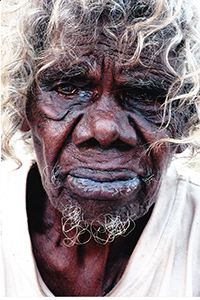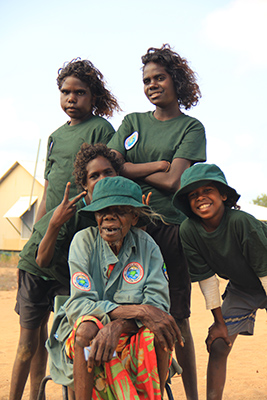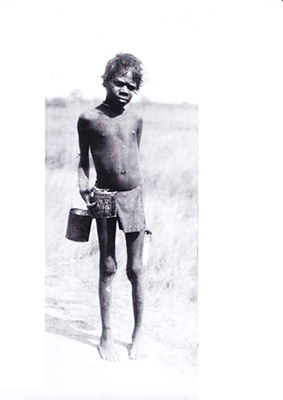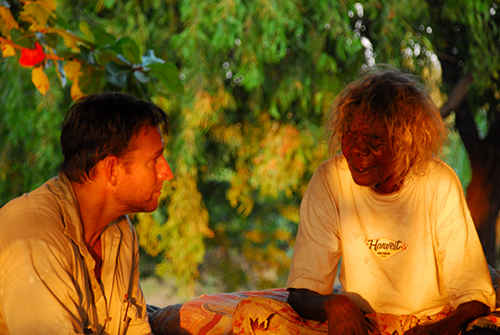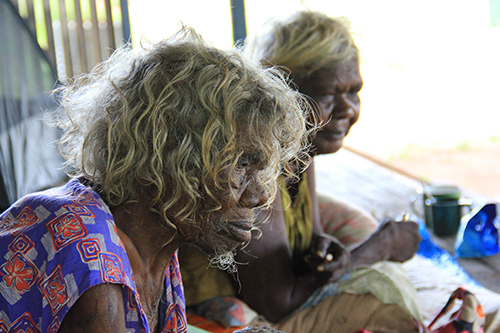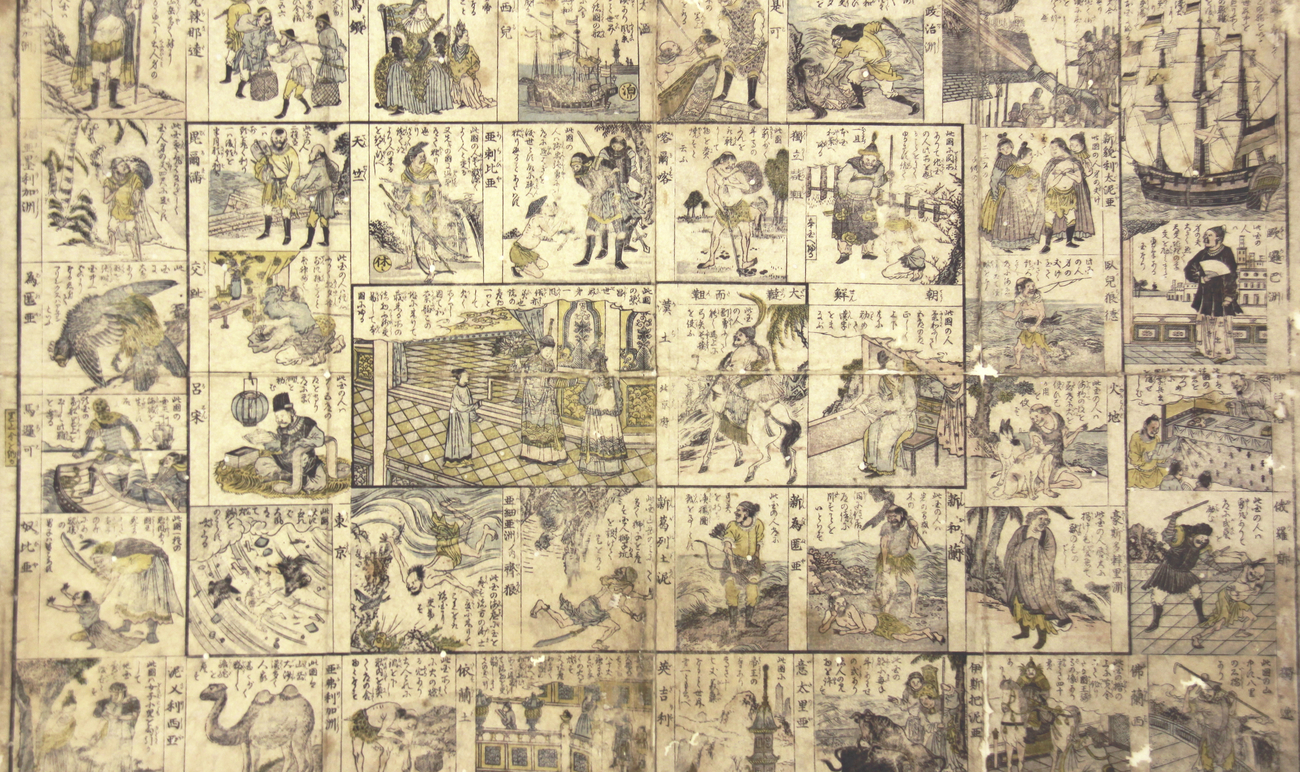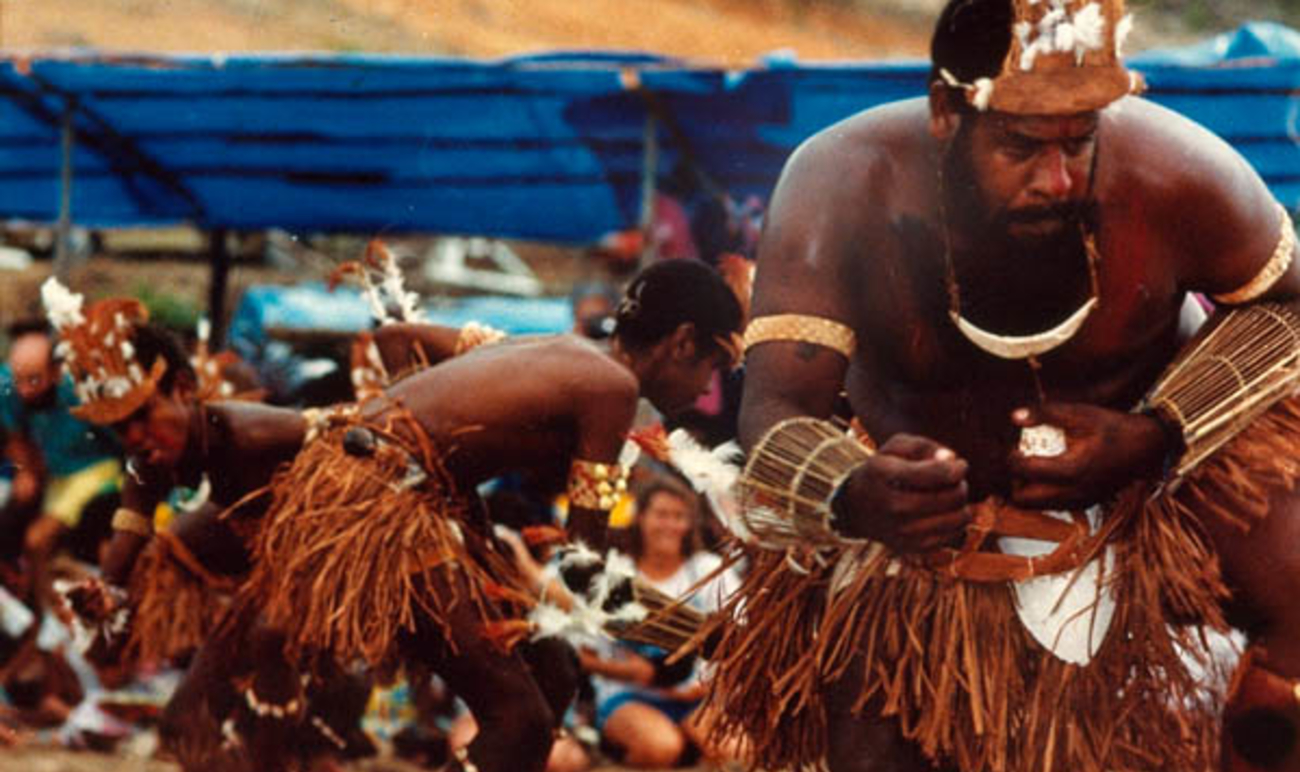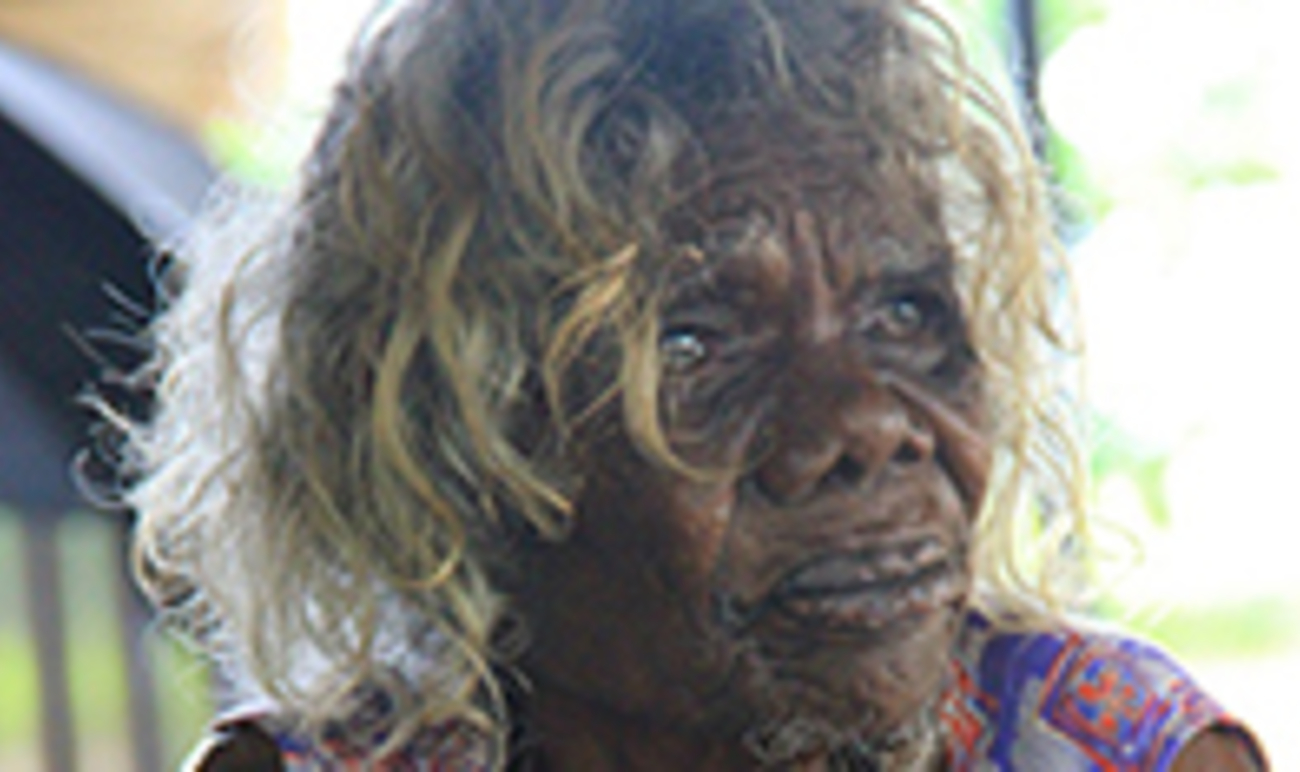AIATSIS celebrated 2019 International Woman’s Day by recognising Senior Australian of the Year Laurie Baymarrwaŋa’s vision to ‘give language back to the children’.
Laurie Baymarrwaŋa (1917-2014) was a humble and inspirational leader.
She lived to celebrate creating a homeland, bilingual school, saving her language, gaining recognition as the ‘Traditional Owner’ over her country and being awarded the 2012 Senior Australian of the Year.
She also had many more achievements in creating the Crocodile Islands Initiative (CII), Crocodile Islands Ranger (CIR) and junior rangers program and a thousand kilometre Turtle Sanctuary, just for starters.
Baymarrwaŋa spent a lifetime promoting the intergenerational transmission of local language and knowledge to sustain authentic livelihoods on the homelands. Her final unfinished project was a book of Yolŋu hand signs.
All around Australia indigenous language is extremely endangered. Yolŋu Sign Language (YSL) is an endangered Indigenous Language from North East Arnhem Land.
In honour of Baymarrwaŋa’s vision we are shaping an Illustrated Handbook of Yolŋu Sign Language of North East Arnhem Land to give this endangered language back to the children.
Baymarrwaŋa would always say:
“Limalanha gurrku mana maŋutjiguma limalama djäma märr ḏilak yanama dhuyugu Yolŋulu gurruku mana nhäma marŋgiyirri limalagara. Bilabilagumunu ŋanapuluma nhaŋ’kumunu dhäŋuny bulthuna nhapiyana mananha limalama ḏilak miṯṯji nyenanha baman’ŋatjili”.
We follow the way of the ancestors, the way of those who come before.[1]
Her respect for language and culture compelled her to create projects in support of language, kin and country. She championed the psychological resilience and health attending bilingualism, and promoted the inter-generational transmission of vital local knowledge found inside Indigenous languages, documenting them for a new generation.[2]
Her legacy is protecting our linguistic, cultural and biological diversity for an inclusive future.[3]
Baymarrwaŋa said to resist assimilation:
"Lima gurrku guya riya-gunhanyini ŋalimalamagu gurruṯuwaygu"
We will share our fish with our kin’.[4]
Laurie Baymarrwaŋa worked for over twenty years to save her language—Yan-nhaŋu. In her eighties and with no English she worked with myself, Bentley James in Yolŋu matha to creat the first Yan-nhaŋu maps, visiting and recording over 600 sites.
Starting in 1993 with barely 250 recorded Yan-nhaŋu words we began preparing the first Yan-nhaŋu dictionary, first ethnography and, using self-generated funds, a family of interlinked collaborative projects designed to create multiple language learning throughout the life cycle.
Side by side we created the Crocodile Islands Rangers and junior rangers, on-line resources, a trilingual dictionary, multigenerational ‘Language Nest’ project.
In addition, Baymarrwaŋa initiated heritage protection projects on fish traps, wells, fire, cultural artefacts, sacred sites, a turtle sanctuary and a plan to feed local children,
Senior Australian of the Year 2012, Baymarrwaŋa produced the 576 page Yan-nhaŋu Atlas and Illustrated Dictionary of the Crocodile Islands.
At her expense she distributed this free to children in over thirty homelands, twelve schools, eight NT ranger programs, and three hundred libraries nationally. Her spirit is in this gift for the future.
Born before the coming of the missions Baymarrwaŋa recalls the seasonal patterns of inter-island travels in bark canoes with the changing tides.
Surviving foreign fishermen, the usurpation of her homelands, WW2 bombings and forced assimilation, ‘Big Boss’, as she was lovingly known, dreamed of starting a homeland on her island of Murruŋga, to give the children back their language and heritage.
Raising seven boys, she showed a younger generation the value of walking in the footsteps of the ancestors. She believed strongly in resisting pressures to assimilate and pass on Yolŋu culture and languages, the unique gifts of the ancestors, for the future of all, this is the law.
Her projects to promote innovations in Yan-nhaŋu local knowledge and encourage residence on ‘healthy homelands’ were guided by the principle;
"Ŋalinyu märr buḻaŋgitj marrkapthana linyalama linyu ga romnha."
'We respect each other and the law.'
Light heartedly, Laurie recalls meeting me in 1993;
"Yuṯam dharramu garana baŋubal. Nani dhuŋa guya milawa mana man’taṉ, rulka murru rebamthala mana yugupala. Ŋarra mananha marŋgiyunha warrpamgu gana nani buthuru dhumuluŋu."
'The young man came to the islands. He was unable to catch a fish, collect his dinner or even light the fire and so I had to teach him everything as he was helpless and illiterate.'
We worked together guided by her vision to provide through the life cycle language learning activities. As a result, she created hundreds of hours of language recordings, including rare hand signs, comprising a priceless collection of her language, so very nearly extinguished.
Baymarrwaŋa was a champion of Yolŋu Sign Language and the first to record and champion Yan-nhaŋu Sign Language. She was working on a project to share this unique endangered hand sign language with the children at the time of her passing.
The Illustrated Handbook of Yolŋu Sign Language of North East Arnhem Land, honours Baymarrwaŋa’s vision to protect Yolŋu Sign Language and ‘give language back to the children’.
Baymarrwaŋa said
"we need to remember our sign language. Every Yolŋu child must grow up learning sign language when they learn to speak their language. We will learn to speak and sign. We call this alternate language of signs gokuluyu mana bulthunway : hand is talking."
More information about Laurie Baymarrwaŋa’s vision to save Indigenous language and give back to the children their priceless ancestral inheritance.
Pre-purchased copies of the Illustrated Handbook of Yolŋu Sign Language of North East Arnhem Land are also available via Dr Bentley James.
Text and images courtesy of Dr Bentley James.
Bibliography
Adone, M.C.D. (2014)“Research Report: Indigenous Sign Languages of Arnhem Land.” Australian Aboriginal Studies (AIATSIS), vol. 1, pp. 132-136.
Adone, M.C.D., & Maypilama, E.L. (2015). The Sociolinguistics of Alternate Sign Languages of Arnhem Land. Learning Communities: International Journal of Learning in Social Contexts [Special Issue: Indigenous Sign Languages], 16, 14-25. doi: 10.18793/LCJ2015.16.02.
(2014a). A Grammar Sketch of Yolŋu Sign Language. München: LINCOM.
(2014b) “Research Report: Bimodal Bilingualism in Arnhem Land.” Australian Aboriginal Studies (AIATSIS), vol. 2, 2014, pp. 101-106.
Adone, M.C.D., Elaine L. Maypilama, B. James and Melanie A. Brück. Anchoredness in Nature and Environment: Linguistic Evidence from Indigenous Australia. Paper presented at the Centre for Australian Studies Universität zu Köln (Cologne) 1.3.2015
in press, (2018a) Yan-nhangu Language of the Crocodile Islands: Anchoredness, Locatedness and Connectedness. Centre for Australian Studies Universität zu Köln (Cologne).
in press, (2018b) A Signed Lingua Franca in Arnhem Land. Centre for Australian Studies Universität zu Köln (Cologne).
in press, (2017a) Indigenous Languages of Arnhem Land in Key Concepts in Indigenous Studies Routledge Press, Series editors G. N. Devy and Geoffrey V Davis.
Baymarrwaŋa, L, James, B (2017). ‘Voice of the Land: Laurie Baymarrwaŋa in Aigner, K (editor), 2017. Australia: the Vatican Museums collection. CittaÌ del Vaticano : Edizioni Musei Vaticani.
(2014) Yan-nhaŋu Atlas and Illustrated Dictionary of the Crocodile Islands. pp.576. The Tien-Wah press, Singapore & Sydney Australia.
Baymarrwaŋa, L. James, B. and Lydon, J. (2014), ‘The Myalls’ Ultimatum’: Photography and the Yolngu in Eastern Arnhem Land, 1917 in J. Lydon (ed) Calling the Shots: Aboriginal Photographies, (Canberra, ACT: Aboriginal Studies Press)
James. B., Baymarrwaŋa, L., Gularrbaŋg,R., Darga, M., Nyambal, R., Nyŋunyuŋu 2, M. (2003). Yan-nhaŋu Dictionary. Milingimbi, CEC Literature Production Centre Northern Territory University press. Darwin. N.T.
James, B., (2019) Fish Traps of the Crocodile Islands: Windows on another World in At Home on the Waves: Human Habitation of the Sea from the Mesolithic to Today eds Tanya J. King & Gary Robinson, Berghahn Books New York-Oxford.
(2015) The Language of Spiritual Power: From Mana to Märr on the Crocodile Islands. In Strings of Connectedness: Essays in Honour of Ian Keen (Ed Toner P.G.).pp.235-263. ANU Press Canberra.
(2010c). Crocodile Islands Rangers Prospectus Report on prospects for upscaling Ranger Program for Yan-nhangu Maringa language groups and sea country. Murrungga Island. Unpublished. N.T.
(2006b). Report for the Northern Land Council, Background, Constitution and Articulation of Traditional Land Ownership for the Town Area of Galiwin’ku from Dhambalaŋur to Dayirri Ck.
(2005a). Regional Activity Plan RAP Dugong and Marine Turtle – Maringa and Gulalay Yan-nhangu speaking people, Crocodile Islands, North Coast Arnhem Land, Northern Territory NAILSMA Ltd. C.D.U. Darwin. N.T.
Kendon, A., (1988) Sign Languages of Aboriginal Australia. Cambridge UP.
Levinson, S. C. and D. P. Wilkins (eds.) 2006. Grammars of Space: Explorations in Cognitive Diversity. Cambridge: Cambridge University Press.
Maypilama, E.L., (2012) Cross- Modal Contact in Shared-Signing communities: Kinship. Paper accepted but not presented for the EuroBABEL final Conference hosted by the European Science Foundation, Leiden, The Netherlands, 23-26 August.
Maypilama, E.L., & Adone, D. (2013). Yolŋu Sign Language: An undocumented language of Arnhem Land. Learning Communities: International Journal of Learning in Social Contexts, 13, 37-44. doi: 10.18793/LCJ2013.13.05.
(2012a) Non-Manual Features in an Alternate Sign Language. Invited paper presented at the National Institute for Deaf Studies and Sign Language. La Trobe University, Melbourne, Australia. July, 2012.
(2012b) Yolngu Sign Language an Alternate Sign Language? Invited paper presented at TELC meeting, Charles Darwin University, Darwin. Australia. August 2012.
(2012c) Language Mixing between a spoken and signed language: A Case Study of bimodal bilingualism. Paper presented at the Workshop on Language Contact. University of Aarhus. Denmark April 11-13th April 2012.
Morphy, F., (2008) Invisible to the state: Kinship and the Yolngu moral order. Centre for Aboriginal Economic Policy Research (CAEPR) seminar series, Wednesday, 29 October 2008. ANU. Canberra.
Warner. L. W., (1937), A Black Civilization: A Social Study of an Australian Tribe. Harper and Brothers Publishers. London, UK.
1978 Murngin Sign Language in Aboriginal Sign Languages of the Americas and Australia volume 2 eds, D. Jean Umiker-Sebeok and Thomas A. Sebeok. Indiana University Bloomington. Plenum Press New York and London.
Footnotes
[1] Posthumous award of the United Nations Peace Prize for Indigenous Film. 2015. ‘Big Boss Last Leader of the Crocodile Islands: Buŋgawa bathala rom ḏäl ga rälpa ḏumurru’. Year: 2015. NITV; Runtime: 53 min, Directed By: Paul Sinclair, Produced By: Jade Sinclair Matt Dwyer, Language: Yan-nhangu language, English subtitles
[2] The Ranger Program she started with her own money now protects more than 10,000km2 of sea country with 250km2 of registered sacred sites. The 1000km2 turtle sanctuary she started is caring for some of the last breeding and nesting places of many endangered species including endangered sea birds. Language nests she started brought old and young together to learn not only language but the kindness and wisdom of kinship and knowledge of country flowing from uncounted generations of intimae coexistence with the environment.
[3] She worked to manage, conserve and enhance the natural marine resources and traditional ecological knowledge living inside local languages to share with children around Australia. By giving The Illustrated Handbook of Yolŋu Sign Language of North East Arnhem Land.to school children across the NT she continues in spirit to bring a new inclusive perspective to education about the diverse inheritance of living indigenous homelands for the future of all Australians.
[4] Life time Achievement Award -NTNRM 2011) 2 (Baymarrwaŋa, L and B, James. 2014: 6)
